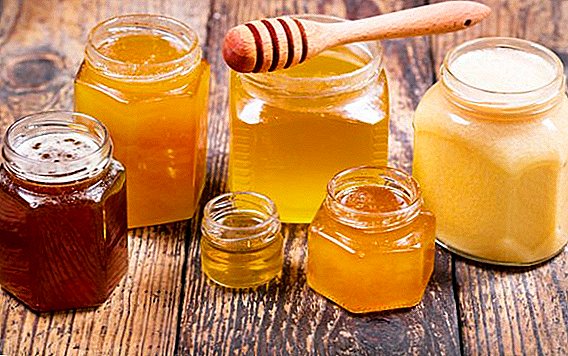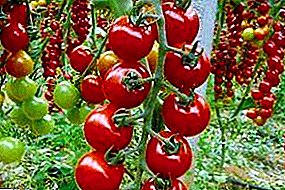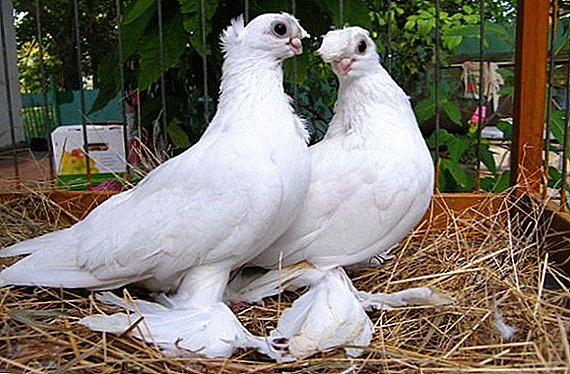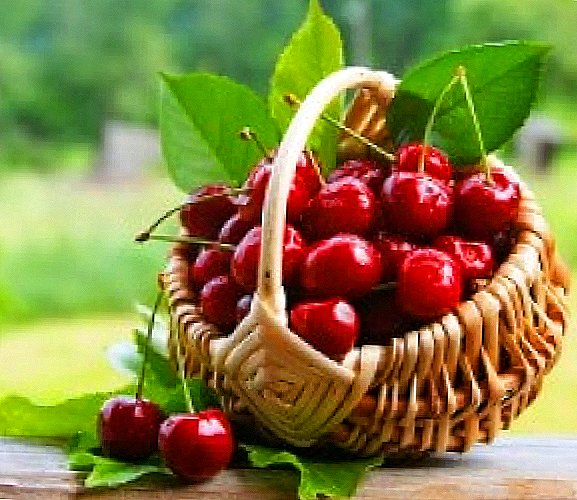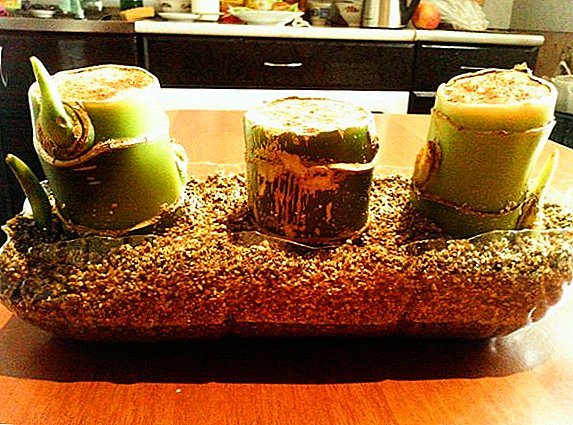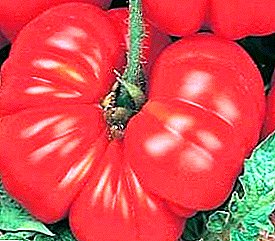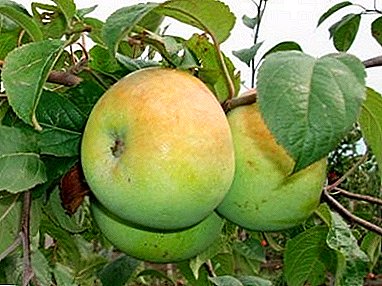
One of the most durable varieties of apples can rightly be called March.
It acquired its name due to the good shelf life of the fruit.
Subject to all rules of storage, sweet, juicy fruits will delight you until March.
What kind is it?
This variety has been widely distributed in the territory of central Russia.
Apple tree March autumn, skoroplodny grade.
The period of their fruiting falls in the month of October.
Ripe apples do not fall off.
The fruits have good preservation and when stored in a dark, cool place. may lie 4 -5 months.
Apple trees of this variety are self-productive. The most suitable pollinators for them will be the varieties: Bogatyr, Northern synapse.
Description of the apple tree March
Depending on the variety, apple trees differ in appearance. The most distinctive features of March are given below.
 March is a sort of apple tall, with an elongated, not too thick crown.
March is a sort of apple tall, with an elongated, not too thick crown.
In height Apple trees of this variety can reach 7 meters.
Shoots strongly pubescent, dark brown.
Leaves oval shape, large, green.
Leaf plate wrinkled, jagged edges.
Fruit evenly spaced throughout the tree. Unripe apples are poorly stored.
Average weight ripe fruit about 150 g. The apples themselves are green, rounded in shape, with a thin smooth skin.
On the surface of the fetus well allocated subcutaneous points.
Funnel and saucer wide and deep. Seeds are medium in size and are located in closed seed chambers.
Pulp white, juicy and dense.
To taste sweet and sour.
A photo
A few photos on which you can see the appearance of apples "March":


Breeding history
This variety was bred in the Institute. Michurin, in 1971. Developed this variety ZI. Ivanova, S.I. Isaeva, G.A. Lobanov.
Apple cultivars Macintosh and Antonovka were taken as a basis. In the role of the mother tree was made apple tree varieties Antonovka. For crossing trees were selected by age. from 10 years.
Initial pollination were subjected to 18 trees, for repeated pollination, pollen was taken only from 11 most successful.
After repeated successful pollination, the breeders received seeds of a new variety. Later, after passing the obligatory stratification, these seeds were planted.
The development of the new variety was stable, and with its further education, the mentor technique was used. Hardening varieties produced in severe climatic conditions.
Growing region
Central Russia is a region of natural growth of the March variety.
 The variety adapts quite well to changing growth conditions.
The variety adapts quite well to changing growth conditions.
However, it is more preferable for it to be wet soils and medium temperature conditions.
When adapting a variety in a dry and hot climate, the key to maintaining the health of the apple will be abundant watering and regular soil loosening,as apple varieties Martovskoe prefer well-moistened soil.
When growing in a too cold climate, the apple tree feels normal.
This grade possesses good frost resistance and the tree almost never freezes.
But it will not be out of place to carry out regular feeding of wood with natural fertilizers in the spring and autumn period.
Yield
Yield varieties March above average. The tree begins to bear fruit for 4 years after planting. Usually, apple trees of this variety bring harvest once a yearbut with age the frequency varies.
Mature fruits cling tightly to the branches and do not fall.
The optimal harvest period is October. Apple picking is best done in several stages so that all the fruits have ripened.
Ripe apples are stored for a very long time. At observance of all norms of storage they can lie down to 5 months.
Planting and care
Proper planting and care plays a significant role in the life of an apple tree. Below is a detailed discussion of the basic rules for the care and planting of apple trees.
 Preparation for planting March variety varieties should be started a week before the expected date.
Preparation for planting March variety varieties should be started a week before the expected date.
The first preparation will be the selection of an apple planting site and the preparation of the soil.
The ideal growth area would be a well lit open space.
For the future apple tree is necessary to prepare a hole in depth. no more than 90 cm
In the ground at the bottom of the fossa, you must add organic fertilizer.
TIP: plant apple trees in groups. This will improve their natural pollination process.
For each seedling there is an optimal planting period.
For landing in the March variety, the most favorable period will be: the end of March - mid-April or the end of September - mid-October.
In order for the harvest of apples to pleasantly please you, throughout the season, the apple tree must provide full care. It includes:
- Inspection of the tree before the start of the season.
- Pruning dried and damaged branches.
- Healing wounds.
- Soil preparation (loosening, cleaning of weeds).
- Spraying against pests.
- Regular watering.
Such a set of measures is not very complicated in execution, however, it will help keep your apple tree in good condition.
Diseases and pests
Detection of pests on apple trees is a consequence of first of all improper care or lack of it.
To get rid of pests of apples you need to know, first of all, which of them are susceptible to:
- Green aphid. It is necessary to destroy the habitat of the parasite, so one of the main measures will be the removal of damaged bark from the tree. Subsequently, you can sprinkle wood with a solution of chamomile infusion.
- Listovertka. To defeat it, it is necessary to spray a solution of karbofos.
Apple moth. The main ally will be spraying the tree with chlorophos solution.
- Apple Blossom. One of the most dangerous pests for future harvest. To destroy it you need to spray the tree with a solution of chlorophos or karbofos.

In terms of disease, apple trees are quite stable. But this resistance can be reduced due to improper care, adverse climatic conditions and other similar factors.
The most common diseases are:
- Black cancer This disease occurs through the fault of man. To destroy it, it is necessary to trim the damaged branches, disinfect, and heal wounds.
- Bacterial burn. To localize it, it is necessary to clean and disinfect the source of infection.
- Cytosporosis. To combat it before flowering, the tree must be treated with the drug "Hom", and after flowering with a solution of blue vitriol.
- Scab. The best measure would be spraying the urea solution.
- Mealy dew. A widespread disease among young trees. To combat it, use a solution of colloidal sulfur.
- Fruit rot. The main measure of control is localization of the outbreak, damaged fruits should be immediately removed from the tree.
 The variety of apples March became widespread due to the qualities of its fruits.
The variety of apples March became widespread due to the qualities of its fruits.
Its unpretentiousness in cultivation, excellent fruit taste, long shelf life and good portability of transportation make it an ideal industrial grade.
In households, it will appeal to lovers to feast on apples all winter.


